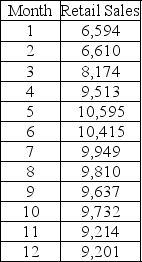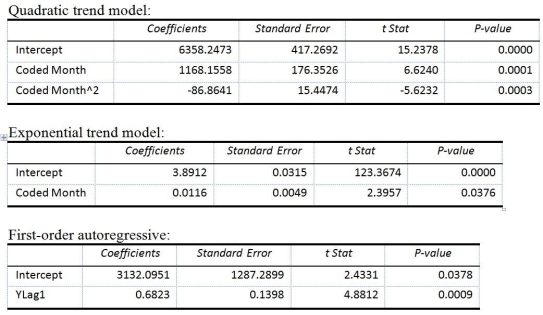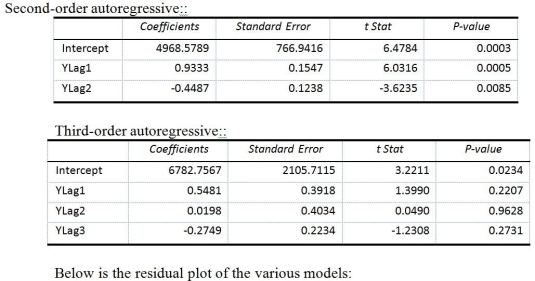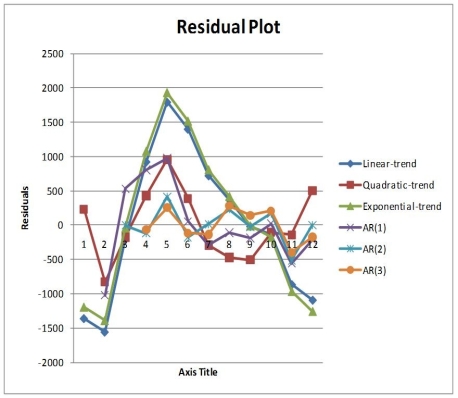TABLE 16-13
Given below is the monthly time-series data for U.S. retail sales of building materials over a specific year.

The results of the linear trend, quadratic trend, exponential trend, first-order autoregressive, second-order autoregressive and third-order autoregressive model are presented below in which the coded month for the first month is 0:




-Referring to Table 16-13, you can conclude that the quadratic term in the quadratic-trend model is statistically significant at the 5% level of significance.
Definitions:
Disruptive Innovation
A theory that describes a process by which a product or service takes root initially in simple applications at the bottom of a market and then relentlessly moves up market, eventually displacing established competitors.
Microcredit Lending
A type of financing that provides small loan amounts to entrepreneurs or individuals in low-income regions to promote economic development and reduce poverty.
Social Business
A type of business model that aims to solve social problems through innovative solutions while being financially self-sustainable.
Business Model Innovation
Refers to the process of making substantial and valuable changes to a company's core operations, strategies, and value propositions to improve performance and create competitive advantage.
Q4: Referring to Table 16-5, the number of
Q42: Referring to 14-16, there is enough evidence
Q54: Referring to Table 17-3, suppose the analyst
Q78: Referring to Table 15-6, what is the
Q79: To test the effectiveness of a business
Q206: Referring to Table 14-19, what is the
Q228: Referring to Table 14-15, there is sufficient
Q261: As a general rule, one can use
Q304: Referring to Table 12-1, the perfume manufacturer
Q325: Referring to Table 14-15, estimate the mean